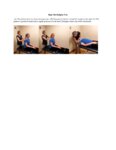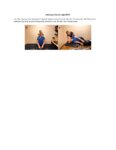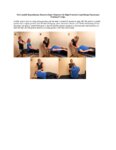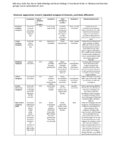A collection of videos relating to the diagnosis and treatment of eye movement disorders. This collection includes many demonstrations of examination techniques.
Dan Gold, D.O., Associate Professor of Neurology, Ophthalmology, Neurosurgery, Otolaryngology - Head & Neck Surgery, Emergency Medicine, and Medicine, The Johns Hopkins School of Medicine.
A collection of videos relating to the diagnosis and treatment of eye movement disorders.
NOVEL: https://novel.utah.edu/
TO
Filters: Collection: ehsl_novel_gold Type: "Text"
1 - 25 of 9
| Title | Description | Subject | ||
|---|---|---|---|---|
| 1 |
 |
Right Dix Hallpike Test | The Dix-Hallpike tests for benign paroxysmal positional vertigo (BPPV). A test is positive when a patient reports vertigo, dizziness, or sensation of movement or falling with nystagmus present. When the head is in this position, it allows the posterior canal to be aligned with the gravitational vect... | Benign Paroxysmal Positional Vertigo (BPPV); Vertigo; Nystagmus; Dizziness |
| 2 |
 |
Side-lying Test for Right BPPV | The side-lying test is an alternative for the Dix Hallpike Test as it reduces the need for cervical extension. The interpretation of a positive test is the same as the Dix Hallpike Test. | Benign Paroxysmal Positional Vertigo (BPPV); Dizzy; Vertigo; Positional Vertigo |
| 3 |
 |
Right Half Hallpike Test | The Half Hallpike Test compliments the Dix Hallpike Test and is traditionally used to assist with the diagnosis of posterior canal-benign paroxysmal positional vertigo (BC-BPPV), cupulolithiasis, as it may produce a greater degree of deflection under the action of gravity without latency when the ot... | Benign Paroxysmal Positional Vertigo; Positional Vertigo; Dizziness; Nystagmus |
| 4 |
 |
The Most Common Audiovestibular Laboratory Tests, and the Specific Conditions in Which They May Assist in Making or Supporting the Diagnosis | VN = vestibular neuritis; VM = vestibular migraine; VP = vestibular paroxysmia; vHIT = video head impulse test; VNG = video-nystagmography; ENG = electronystagmography; VOG = video-oculography; VEMPs = vestibular evoked myogenic potentials; SCDS = superior canal dehiscence syndrome; BPPV = benign pa... | Vestibular Examination; Vestibular Lab Testing |
| 5 |
 |
ENG, VNG, & VOG | 𝗢𝗿𝗶𝗴𝗶𝗻𝗮𝗹 𝗗𝗲𝘀𝗰𝗿𝗶𝗽𝘁𝗶𝗼𝗻: Electronystagmography (ENG), and videonystagmography (VNG) or videooculography (VOG) are a collection of tests of eye movements that are performed either using surface electrodes around the eye (ENG) or with video goggles... | Vestibular Lab Testing; ENG, VNG, & VOG |
| 6 |
 |
The Most Common Vestibular Conditions Categorized by Timing and Triggers, with Specific Ocular Motor and Vestibular Features that Should be Sought for Each | HINTS+ = Head Impulse, Nystagmus, Test of Skew, ‘Plus' bedside assessment of auditory function; HIT = head impulse test; NP = nerve palsy; BPPV = benign paroxysmal positional vertigo; SCDS = superior canal dehiscence syndrome; BVL = bilateral vestibular loss; PPPD = persistent postural perceptual ... | Vestibular Examination |
| 7 |
 |
Approach to the Ocular Motor and Vestibular History and Examination | History and examination of ocular motor and vestibular. | Saccades; Ocular Stability; Vestibular Examination |
| 8 |
 |
The Canalith Repositioning Maneuver/Epley Maneuver for Right Posterior Canal Benign Paroxysmal Positional Vertigo | Posterior canal (PC) accounts for 70-90% cases of BPPV [1-3] and resolves with canalith repositioning maneuvers 90% of the time [4-20]. The Epley maneuver is considered a gold-standard treatment, with class 1 evidence for use. | Benign Paroxysmal Positional Vertigo (BPPV); Dizzy; Positional Dizziness; Nystagmus |
| 9 |
 |
Expanded Nystagmus & Saccadic Intrusions/Oscillations Differential | Expanded nystagmus & saccadic intrusions/ oscillations differential |
1 - 25 of 9
